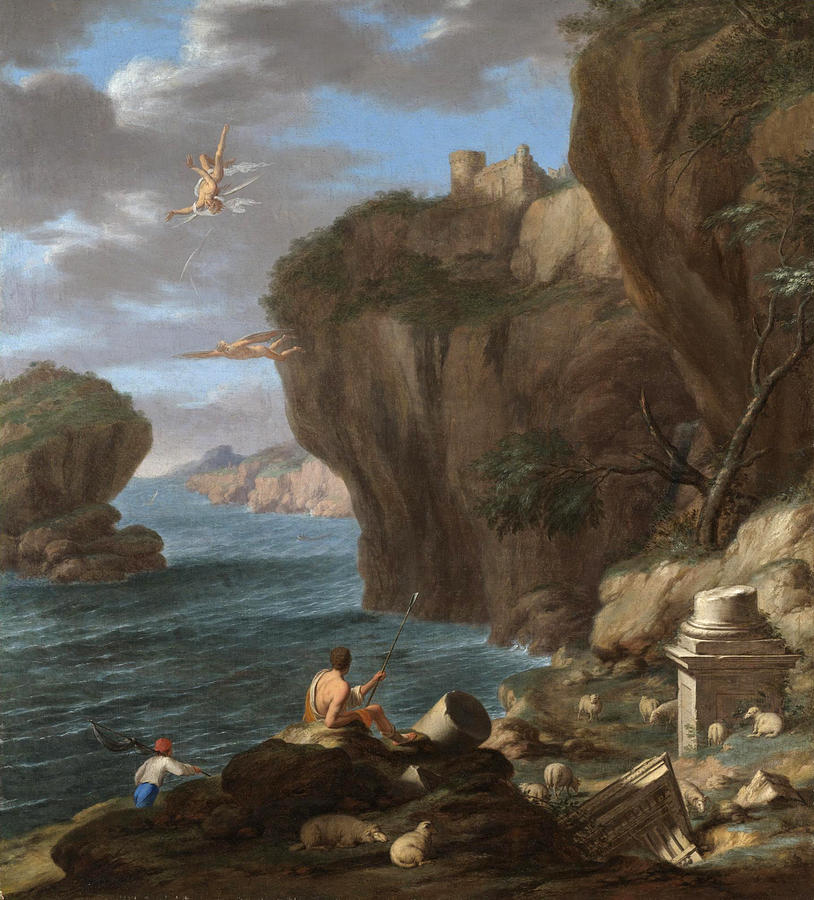

1560, Royal Museums of Fine Arts of Belgium, Brussels, detail Landscape with the Fall of Icarus, Pieter Bruegel the Elder (after?), c. The label on the museum wall for the painting includes a question mark just after Bruegel's name. The other thing is that the specialists see it to have a relatively weak quality compared to other Bruegels, although this question is complicated by later overpainting. There are two arguments for that thesis - the painting is in oil whereas Bruegel's other paintings on canvas are in tempera. However, technical examinations from the 1990s caused the attribution to be regarded as very doubtful, and the painting, perhaps painted in the 1560s, is now usually seen as a good early copy by an unknown artist of Bruegel's lost original, perhaps from about 1558. The composition is so dazzling that numerous curators identify it as one of the famous painter's creations. Landscape with the Fall of Icarus was long thought to be created by the leading painter of Dutch and Flemish Renaissance painting, Pieter Bruegel the Elder. Ignoring his father's warnings, Icarus chose to fly too close to the sun, melting the wax, and fell into the sea and drowned. In Greek mythology, Icarus succeeded in flying, with wings made by his father Daedalus, using feathers secured with bees wax. But when we direct the eye to a certain spot in the water, just below the ship, we can see the real, hidden drama - the legs of Icarus, a young man who became the victim of his own hubris. The boredom of this everyday life scene can be suffocating. Everything is ordinary and is happening at its own regular pace. The ships are sailing to unknown lands, a partridge is sitting on the branch of a tree, the sun is going down.

A ploughman is plowing the lands, a shepherd is watching over his sheep, an angler is fishing.


 0 kommentar(er)
0 kommentar(er)
